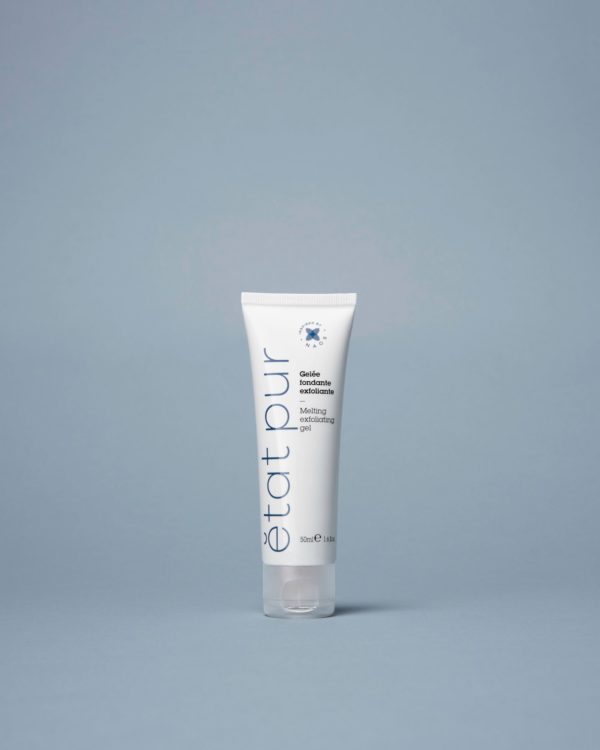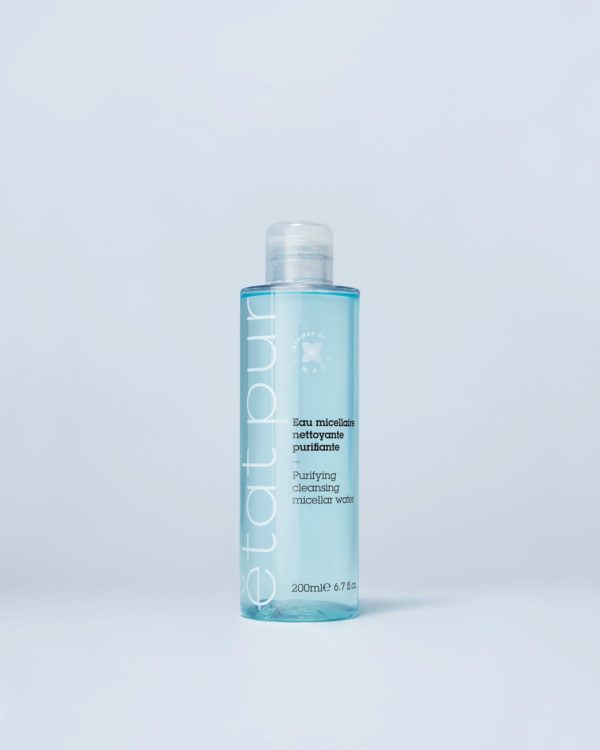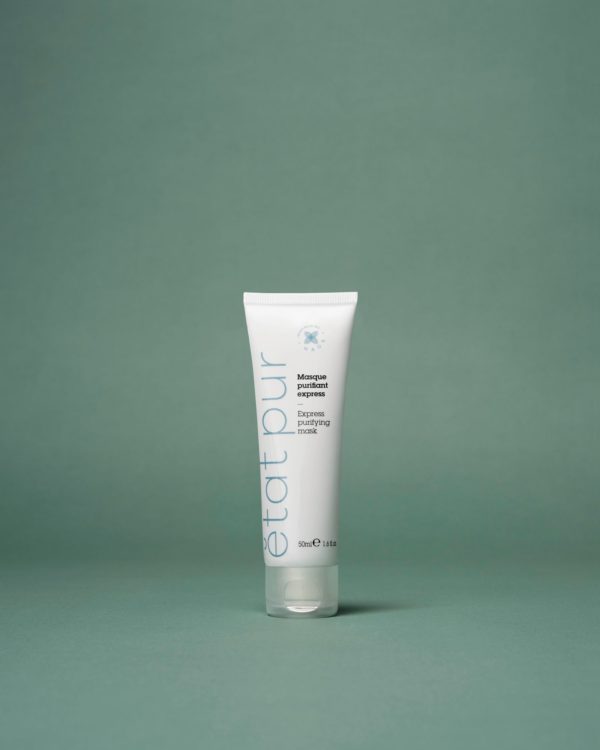
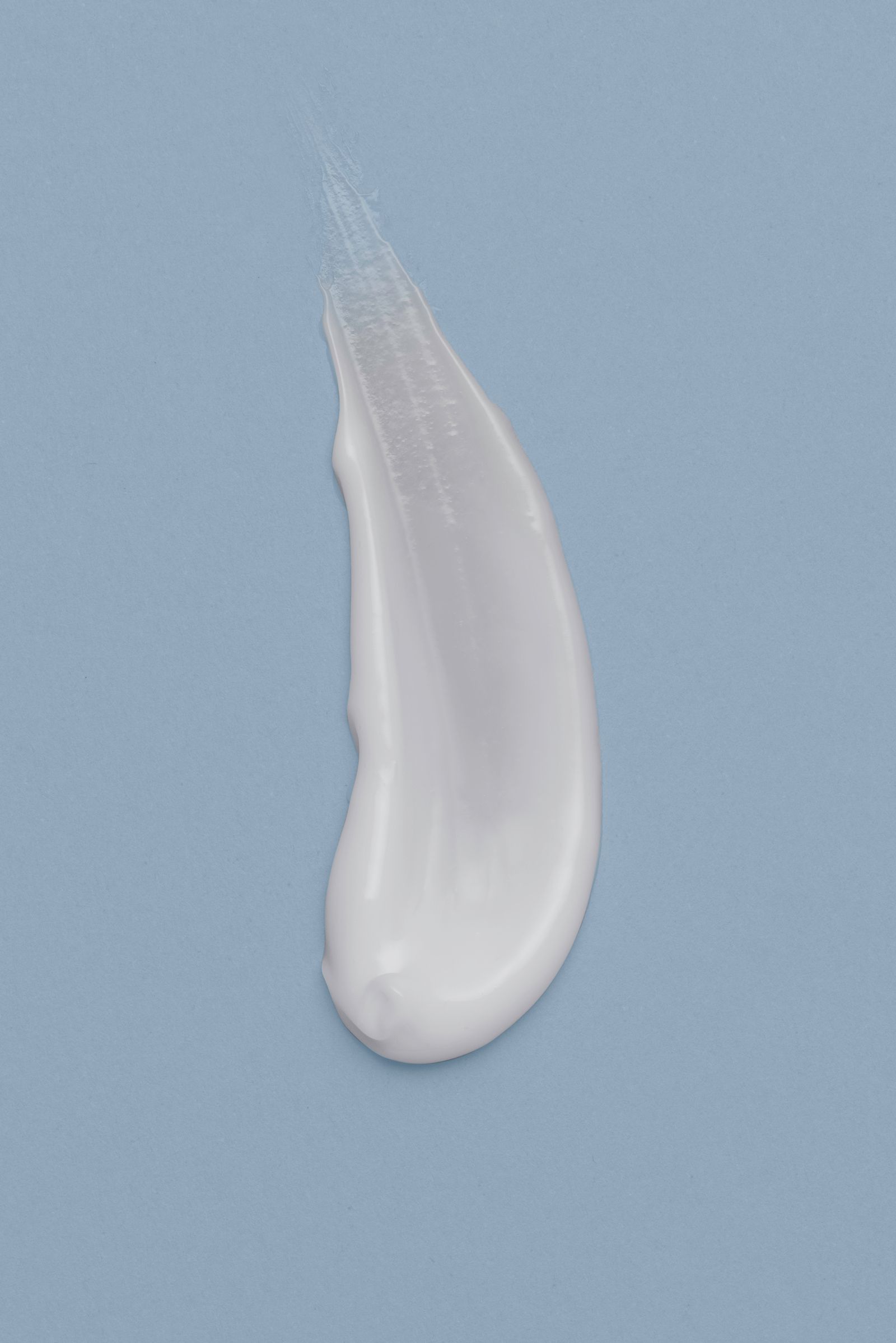


Melting moisturising cream
Face, Adults and teenagers
Order online
A meltingly delicate, smooth textured facial moisturiser that provides instant comfort. Long-lasting hydration.
- Biomimetic formulation
- Made in France
- No artificial colouring agents
- No mineral oil
- No silicone
- pH neutral for the skin
- Tested under dermatological control
- Vegan
-
Moisturises
For everyday use, this cream keeps the skin intensely moisturised all day long (8-hour hydration).
-
Protects
3 plant oils combined with natural jojoba and mimosa waxes help nourish and preserve the skin’s natural protective film. Their concentration has been chosen to provide the perfect moisture/nutrition balance for normal to combination skin.
-
Softens
Better moisturised and protected from external aggressions, skin is more supple and less reactive.
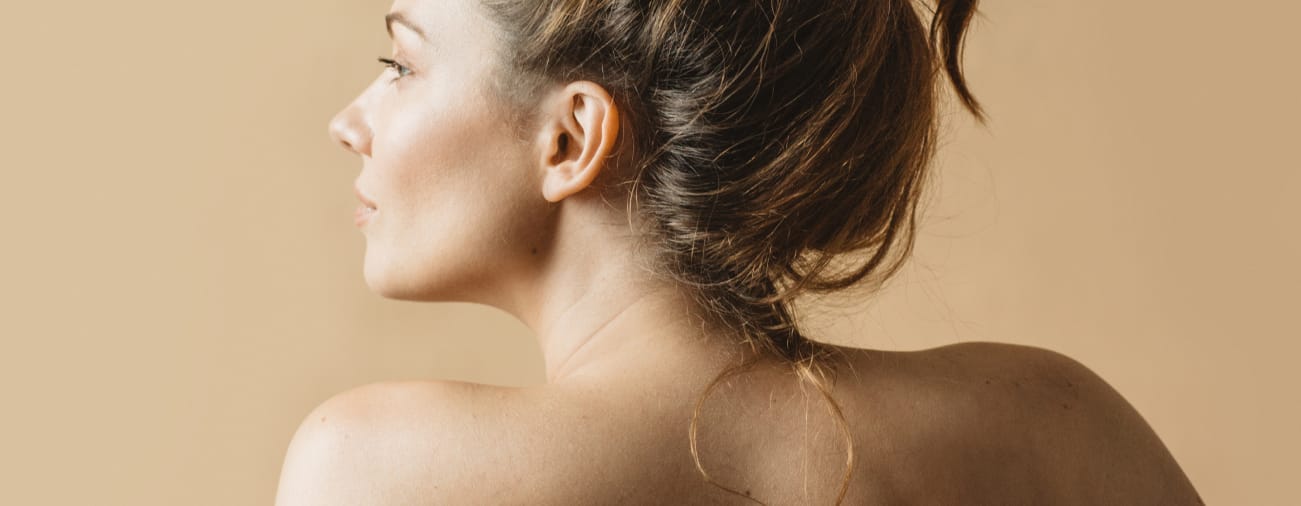
Is this care suitable
for your skin?
-
When
In the morning and evening.
-
Where
Apply to the entire face and neck. Apply to dry, thoroughly cleansed skin.
-
How
Gently apply the necessary amount as desired.
This formula contains 99.7% biomimetic ingredients, which are in perfect affinity with the skin (found naturally within the skin, similar to the components naturally present in the skin or perfectly assimilable by the skin).
They have been carefully selected for their degree of purity.
The Melting Moisturising Cream contains vegetable glycerine to improve the skin’s moisture balance as well as plant phospholipids and glycolipids to restore the skin barrier.
For more information on the composition of this product, click:
AQUA/WATER/EAU
What it is?
Water contained in Isodermic Water.
What’s the point?
Contributes to the Isodermic Water patent.
NAOS has designed a perfectly defined water, meeting the three fundamental criteria for physiological fluids: pH, oxidation resistance, and concentration of mineral salts.
It optimises cellular functioning and preserves the balance of healthy skin.
Components contributing to this patent: aqua/water/eau, disodium adenosine triphosphate, carnosine, laminaria digitata extract.
How do you get it?
Mineral origin.
DICAPRYLYL CARBONATE
What it is?
Fatty alcohol derivative.
What’s the point?
Emollient: soothes and softens the skin.
How do you get it?
Combination of fatty alcohol of plant origin, and a synthesised carbonate derivative.
GLYCERIN
What it is?
Glycerin.
What’s the point?
Moisturising: increases the water content of the skin’s outermost layers.
How do you get it?
Component naturally found in the skin, extracted from vegetable oil.
MICROCRYSTALLINE CELLULOSE
What it is?
Microcrystalline cellulose.
What’s the point?
Gelling: provides the texture with consistency.
How do you get it?
Wood extraction.
JOJOBA ESTERS
What it is?
Jojoba esters.
What’s the point?
Emollient: soothes and softens the skin.
How do you get it?
Obtained from jojoba oil.
SUCROSE STEARATE
What it is?
Sucrose ester.
What’s the point?
Emulsifying: enables the formation and stabilisation of an emulsion.
How do you get it?
Combination of sugar and fatty acid of plant origin.
GLYCERYL STEARATE CITRATE
What it is?
Glycerin and fatty acid derivative.
What’s the point?
Emulsifying: enables the formation and stabilisation of an emulsion.
How do you get it?
Combination of glycerin, fatty acid, and citric acid of plant origin.
HELIANTHUS ANNUUS (SUNFLOWER) SEED WAX
What it is?
Sunflower wax.
What’s the point?
Emollient: soothes and softens the skin.
How do you get it?
Sunflower seed extraction.
CETEARYL ALCOHOL
What it is?
Fatty alcohol.
What’s the point?
Thickening: provides the texture with consistency.
How do you get it?
Obtained from fatty acid extracted from vegetable oil.
OLEA EUROPAEA (OLIVE) FRUIT OIL
What it is?
Olive oil.
What’s the point?
Nourishing: strengthens the skin’s protective film and the epidermis’s structure by supplying lipids.
How do you get it?
Olive extraction.
LEUCONOSTOC/RADISH ROOT FERMENT FILTRATE
What it is?
Black radish extract.
What’s the point?
Stabilising: contributes to the product’s homogeneity or stability.
How do you get it?
Biotechnology.
Biotechnology uses biological processes, including natural fermentation, to obtain ingredients.
CELLULOSE GUM
What it is?
Cellulose gum.
What’s the point?
Gelling: provides the texture with consistency.
How do you get it?
Wood extraction.
FRAGRANCE (PARFUM)
What it is?
Fragrance composition.
What’s the point?
Scent & Fragrance: provides the product with olfactory sensory appeal.
How do you get it?
Synthesis
To select an ingredient, NAOS can call on synthesis in order to:
– reconstitute a natural molecule without having to extract it from a plant and thus better respect biodiversity,
– obtain a pure, perfectly defined ingredient.
SODIUM CITRATE
What it is?
Citric acid derivative.
What’s the point?
Stabilising: helps adjust the product’s pH.
How do you get it?
Component naturally found in the skin, obtained by biotechnology.
Biotechnology uses biological processes, including natural fermentation, to obtain ingredients.
XANTHAN GUM
What it is?
Xanthan gum.
What’s the point?
Gelling: provides the texture with consistency.
How do you get it?
Biotechnology.
Biotechnology uses biological processes, including natural fermentation, to obtain ingredients.
SALIX NIGRA (WILLOW) BARK EXTRACT
What it is?
Black willow extract.
What’s the point?
Stabilising: contributes to the product’s homogeneity or stability.
How do you get it?
Black willow bark extraction.
SODIUM BENZOATE
What it is?
Sodium benzoate.
What’s the point?
Preservative: protects the product from microbial contamination throughout its use.
How do you get it?
Synthesis
To select an ingredient, NAOS can call on synthesis in order to:
– reconstitute a natural molecule without having to extract it from a plant and thus better respect biodiversity,
– obtain a pure, perfectly defined ingredient.
POLYGLYCERIN-3
What it is?
Glycerin polymer.
What’s the point?
Humectant: maintains the skin’s moisture level.
How do you get it?
Obtained by synthesis from glycerins extracted from vegetable oil.
LACTIC ACID
What it is?
Lactic acid.
What’s the point?
Stabilising: helps adjust the product’s pH.
How do you get it?
Component naturally found in the skin, obtained by biotechnology.
Biotechnology uses biological processes, including natural fermentation, to obtain ingredients.
POTASSIUM SORBATE
What it is?
Sorbic acid derivative.
What’s the point?
Preservative: protects the product from microbial contamination throughout its use.
How do you get it?
Synthesis
To select an ingredient, NAOS can call on synthesis in order to:
– reconstitute a natural molecule without having to extract it from a plant and thus better respect biodiversity,
– obtain a pure, perfectly defined ingredient.
OLEA EUROPAEA (OLIVE) OIL UNSAPONIFIABLES
What it is?
Olive oil unsaponifiables.
What’s the point?
Lipid-replenishing: promotes the natural production of the epidermal lipids involved in hydration.
How do you get it?
Olive extraction.
TOCOPHEROL
What it is?
Vitamin E or tocopherol.
What’s the point?
Antioxidant: prevents the oxidation of the ingredients contained in the product.
How do you get it?
Component naturally found in the skin, extracted from vegetable oil.
ACACIA DECURRENS FLOWER WAX
What it is?
Mimosa wax.
What’s the point?
Emollient: soothes and softens the skin.
How do you get it?
Obtained from mimosa flower.
LAMINARIA DIGITATA EXTRACT
What it is?
Brown algae extract.
What’s the point?
Contributes to the Isodermic Water patent.
NAOS has designed a perfectly defined water, meeting the three fundamental criteria for physiological fluids: pH, oxidation resistance, and concentration of mineral salts.
It optimises cellular functioning and preserves the balance of healthy skin.
Components contributing to this patent: aqua/water/eau, disodium adenosine triphosphate, carnosine, laminaria digitata extract.
How do you get it?
Laminaria algae extraction.
PHOSPHOLIPIDS
What it is?
Phospholipids.
What’s the point?
Lipid-replenishing: promotes the natural production of the epidermal lipids involved in hydration.
How do you get it?
Component naturally found in the skin, extracted from vegetable oil.
GLYCINE SOJA (SOYBEAN) OIL
What it is?
Soybean oil.
What’s the point?
Nourishing: strengthens the skin’s protective film and the epidermis’s structure by supplying lipids.
How do you get it?
Soybean extraction.
HELIANTHUS ANNUUS (SUNFLOWER) SEED OIL
What it is?
Sunflower oil.
What’s the point?
Nourishing: strengthens the skin’s protective film and the epidermis’s structure by supplying lipids.
How do you get it?
Sunflower seed extraction.
CARNOSINE
What it is?
Peptide.
What’s the point?
Contributes to the Isodermic Water patent.
NAOS has designed a perfectly defined water, meeting the three fundamental criteria for physiological fluids: pH, oxidation resistance, and concentration of mineral salts.
It optimises cellular functioning and preserves the balance of healthy skin.
Components contributing to this patent: aqua/water/eau, disodium adenosine triphosphate, carnosine, laminaria digitata extract.
How do you get it?
Component naturally found in the skin, obtained by synthesis.
To select an ingredient, NAOS can call on synthesis in order to:
– reconstitute a natural molecule without having to extract it from a plant and thus better respect biodiversity,
– obtain a pure, perfectly defined ingredient.
DISODIUM ADENOSINE TRIPHOSPHATE
What it is?
Nucleotide (ATP).
What’s the point?
Contributes to the Isodermic Water patent.
NAOS has designed a perfectly defined water, meeting the three fundamental criteria for physiological fluids: pH, oxidation resistance, and concentration of mineral salts.
It optimises cellular functioning and preserves the balance of healthy skin.
Components contributing to this patent: aqua/water/eau, disodium adenosine triphosphate, carnosine, laminaria digitata extract.
How do you get it?
Component naturally found in the skin, obtained by biotechnology.
Biotechnology uses biological processes, including natural fermentation, to obtain ingredients.
GLYCOLIPIDS
What it is?
Glycolipids.
What’s the point?
Lipid-replenishing: promotes the natural production of the epidermal lipids involved in hydration.
How do you get it?
Component naturally found in the skin, extracted from vegetable oil.
GLYCINE SOJA (SOYBEAN) STEROLS
What it is?
Soybean phytosterols.
What’s the point?
Lipid-replenishing: promotes the natural production of the epidermal lipids involved in hydration.
How do you get it?
Soybean extraction.
Of the 30,000 ingredients approved for use in cosmetics, our formulation charter only includes 150 to keep only those that respect your skin.
Find out more-
How should I moisturise normal to combination skin?
Normal skin can be temporarily dehydrated (tightness, discomfort, etc.). To take good care of normal skin, it’s important to provide it with water (hydration), as well as oils and fatty substances (nutrition) to keep it healthy. Our Melting Moisturising Cream ensures the correct balance between hydration and nutrition for normal to combination skin.
-
What is this product’s nutritive index?
The index on the front of the packaging tells you the level of nutrition (fat) that the product provides. Our Melting Moisturising Cream has an index of 3 out of 5, providing an average level of nutrition. It therefore provides the perfect balance of moisture and nutrition for normal and combination skin.
-
What steps can I take to better moisturise my face and neck?
Gently massage in the moisturising cream everywhere, being particularly careful on the most fragile areas (around the eyes, mouth, etc.). You can use massage techniques in an upwards motion. Work from the middle to the sides of the face, from the chest to under the chin, smooth out wrinkles on your forehead or revitalise eyes going up to the temples.
-
Is the Melting Moisturising Cream recommended for sensitive skin?
Yes, our Melting Moisturising Cream is formulated to be kind to facial skin and is tested on sensitive skin.
-
What is the difference between Pure Skincare and Pure Actives?
Pure Skincare products do not contain any active ingredients, to take care of skin every day, without needlessly irritating it. Pure Actives offer a targeted action to treat skin problems when necessary (1 Pure Active = 1 skin issue). Healthy skin with no particular issues does not need Pure Actives.
-
How can Pure Skincare products be effective without any active ingredients?
They are specifically formulated to give healthy skin with no particular issues what it needs, to cleanse and moisturise it while preserving its natural mechanisms. Adding in active ingredients that the skin doesn’t need can damage it. Over 98% of the ingredients in our Pure Skincare products are biomimetic (global Biomimetic© patent), for perfect affinity with the skin.
-
Do your products contain fragrances?
Our Pure Actives do not contain fragrances, nor do some of the other care products such as the Moisturising Eye Contour Fluid, the Melting Exfoliating Gel and the Express Purifying Mask. The majority of our Pure Skincare products are very lightly scented to make them pleasant to use while being kind to skin. We carefully select our fragrances, which we create ourselves, and make sure they are free from allergens and sensitising substances.
-
What makes Pure Skincare special?
Pure Skincare products do not contain any active ingredients, to cleanse and moisturise the skin every day. The biomimetic formulation of all Pure Skincare products is in perfect affinity with the skin so as to strengthen the natural processes without overtreating. Healthy skin with no particular issues does not need superfluous active ingredients that risk irritating it.
-
Are your products tested on animals?
No, in accordance with the applicable European cosmetics regulations, our products and the ingredients they contain are not tested on animals. Toxicology experts have evaluated our formulas’ perfect tolerance. And, of course, our products are tested under dermatological and ophthalmological supervision if necessary.
-
Do your products contain preservatives?
In order to protect our formulas from contamination, we use the necessary amount of natural preservatives (black radish extract, potassium sorbate or capryloyl glycine). We also use airless bottles, pumps and tubes to limit the risk of contamination, and therefore the quantity of preservatives.
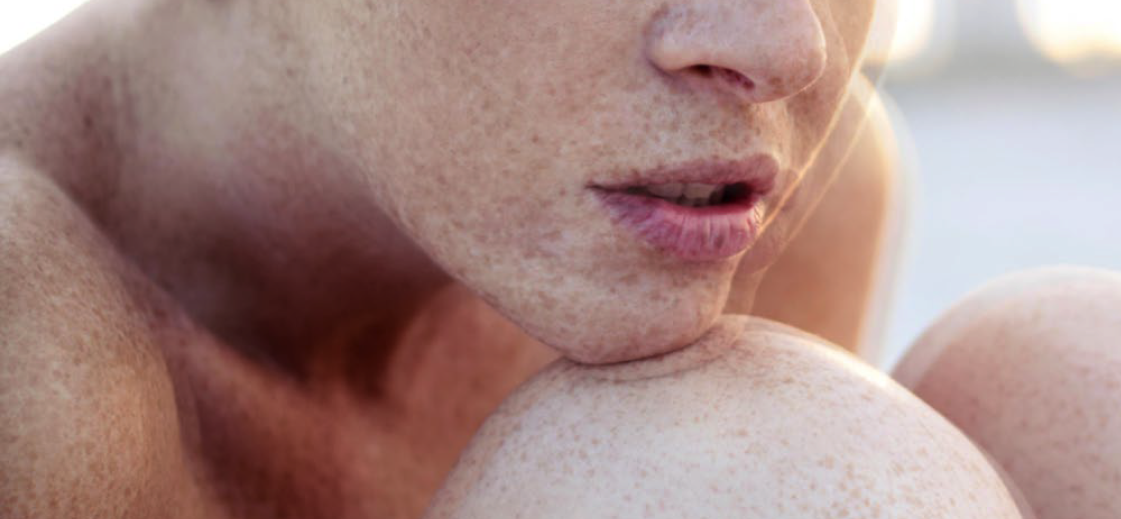
SKIN COACH
Caring for your skin, our skin coaches can guide you.
